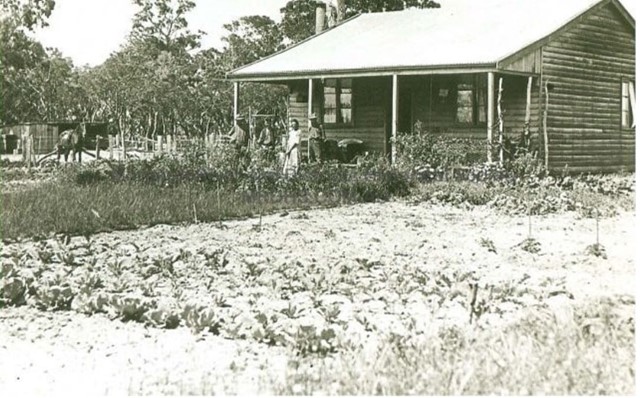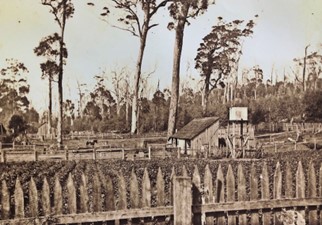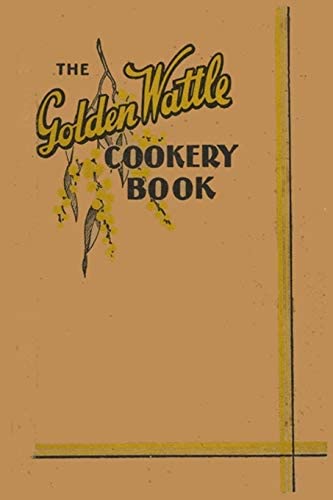Group Settlement Gardens
Sharing the learning journey
Sharing the learning journey
Living history through bushfoods and kitchen gardens on Wadandi Country in the South West of WA
The trail continues to our representation of the Group Settlement garden.
Group Settlement from the United Kingdom began in 1923. The idea behind the Group Settlement Scheme was to help make WA self-sufficient in food, as most food was still being imported from overseas. The plan was led by Premier James Mitchell, or ‘Moo Moo Mitchell,’ as he was so keen on the dairy industry!
Small single teacher schools were set up along with each group settlement. Most schools had a kitchen garden for the teachers and their students. A school was opened here in 1923 for the children of Group Settlements No. 6 and 7 Nuralingup VII with the head teacher being John Tonkin, who later became Premier of WA (1971-1974). The school changed its name to Forest Grove in 1928 and continued to operate until 1962.
Planting fruit trees was a priority when establishing a kitchen garden. Produce was used fresh, for preserving, and was often given away or traded with neighbours and family. Many old trees can still be seen in the district. Even when the house had been abandoned or demolished the fruit trees often remained for many years. Fruit tree varieties included quince, fig, lemon, mulberry, cherry plum, pear and grape (not a fruit tree). Produce was eaten fresh, cooked, made into jam or preserved for use out of season.
The kitchen garden was a necessity as families often lived a long way from shops and had little or no transport. Often they could not afford to purchase them, especially during the time of the Great Depression. Growing vegetables was an activity performed by the whole family and children were often required to do garden chores like seed raising, weeding, picking and water carrying.
Varieties included broad beans, beetroot, carrots, potatoes, cabbage, peas and beans, tomatoes, pumpkin, rhubarb, radish, silverbeet, swedes and turnips. There were a much smaller range of vegetables available than today, also some varieties grown that are no longer much in favour, like turnips. Zucchinis were unheard of!
Herbs were also an important part of the garden and were extensively used in cooking. Varieties included parsley (a major ingredient in many dishes), thyme and rosemary.
Planting and harvesting of different varieties was seasonal. Many vegetables need to be seeded at just the right time to ensure a good growth period and this resulted in a rhythmic cycle through the year. Summer was very hot and dry and many people struggled to keep gardens alive with so little water. Autumn, winter and spring were the main growing seasons.
Many foods grown were seasonal and there was no freezing or refrigeration. If produce was greater than what could be used immediately it was preserved: turned into jam, conserves, relishes and pickles. Vacola brand jars with metal clip lids were standard items in most households.
Water was a major limiting factor on when, how vegetables were grown, as well as the quality and quantity. Water came from a raised tank on a stand, well, or sometimes only a creek. The household water supply often consisted of a single 1000 gallon tank for drinking, cooking, washing and gardening. It had to last the whole summer so water available for vegetables was minimal. Many reused water from washing on the vegetables.
Seed raising was often done in separate containers before planting. Vessels were reused from other purposes and included pots, pans and kerosene boxes. Seed potatoes were hoarded and shoots cut from potatoes used in the kitchen were often replanted in the potato patch. Seeds might be saved from previous harvests or bought by mail order from Bairds in Perth, and plant material was regularly swapped and shared. Taking cuttings from other people’s gardens was standard practice.
John Alferink grew up near Witchcliffe and recalls going to the Forest Grove Agricultural Show as a child. It was a major community event and was held on the grounds of the Forest Grove School, now the grounds of MRIS. He remembered seeing vegetables on show as well as grains and livestock.
The first show was held in November 1930. The opportunity to show produce was a big incentive for gardeners and high quality produce was in evidence.
Prizes were awarded for a wide range of produce including dairy cattle, pigs, horses, poultry, flowers. Children’s flowers, grasses and fodders, dairy produce, ring events, and schoolwork.
Our group settlement garden acknowledges the past but differs through using modern materials coreten steel and reticulation, while still remaining the workhorse vegetable garden.
Imagine arriving from a city like Manchester and not knowing how to grow your food in this country?


